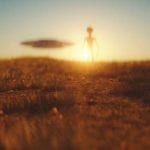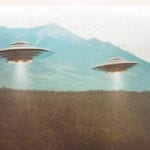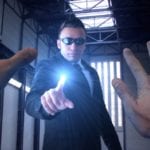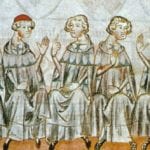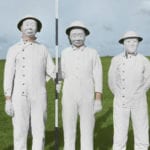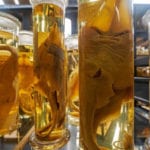 Mysteries
Mysteries  Mysteries
Mysteries  History
History 10 Surprising Stories About the Texas Rangers
 Humans
Humans 10 Philosophers Who Were Driven Mad by Their Own Theories
 Miscellaneous
Miscellaneous 10 Video-Game-Worthy Weapons and Armors from History
 Weird Stuff
Weird Stuff 10 Psychics Who Accurately Predicted Wartime Events
 The Arts
The Arts 10 Pieces of Art Inspired by a Broken Heart
 Health
Health 10 Science Fiction-Sounding New Medical Treatments
 History
History 10 Surprising Facts About the Father of Submarine Warfare
 Space
Space Ten Astonishing New Insights into Alien Worlds
 Weird Stuff
Weird Stuff 10 Bizarre Summer Solstice Rituals Still Practiced Today
 Mysteries
Mysteries Top 10 Haunting Facts About the Ghost Ship MV Alta
 History
History 10 Surprising Stories About the Texas Rangers
 Humans
Humans 10 Philosophers Who Were Driven Mad by Their Own Theories
Who's Behind Listverse?

Jamie Frater
Head Editor
Jamie founded Listverse due to an insatiable desire to share fascinating, obscure, and bizarre facts. He has been a guest speaker on numerous national radio and television stations and is a five time published author.
More About Us Miscellaneous
Miscellaneous 10 Video-Game-Worthy Weapons and Armors from History
 Weird Stuff
Weird Stuff 10 Psychics Who Accurately Predicted Wartime Events
 The Arts
The Arts 10 Pieces of Art Inspired by a Broken Heart
 Health
Health 10 Science Fiction-Sounding New Medical Treatments
 History
History 10 Surprising Facts About the Father of Submarine Warfare
 Space
Space Ten Astonishing New Insights into Alien Worlds
 Weird Stuff
Weird Stuff 10 Bizarre Summer Solstice Rituals Still Practiced Today
10 Official Government Programs That Studied UFOs
UFO lore has been one of the most exciting and recurring elements in modern mythology, inspiring public fears, wild theories, and pop culture with stories of extraterrestrial visitors flying over our heads. These strange sightings have been reported by individuals all over the world, and the possibility of a cosmic threat to national security has led a number of countries to seriously investigating the matter over the last century.
10 Office Of Investigations Of Anomalous Aerial Phenomena
Peru
Following the 2001 collapse of Alberto Fujimori’s regime, the Peruvian Air Force announced the creation of a formal office for UFO investigation, the Oficina de Investigacion de Fenomenos Aereos Anomalos (OIFAA). A series of UFO sightings over the capital city of Lima created a perceived need to investigate any possible national security threats from aerial anomalies. Some in the administration were more inclined to support UFO research due to Fujimori’s alleged 1991 UFO encounter. According to the story, the ex-President, well-known for his fishing trips on the Amazon, had just landed on the river where he and a group of military officers were buzzed by a huge metallic object moving south 300 meters (1,000 ft) over their heads. The President swore the officers to secrecy for fear of political embarrassment, but the Peruvian military’s UFO interest remained keen.
First located in Lima’s middle-class suburb of Miraflores, the OIFAA was relatively open to the media, the public, and civilian UFOlogists. Air Force Commander Julio Cesar Chamorro recounted that the Office once received a call about UFOs from rural farmers. Rather than fearing imminent invasion, the farmers were requesting the government intervene to prevent the UFOs and their occupants from spooking their livestock. The Peruvian Air Force’s open-mindedness dates back to 1980, when Captain Oscar Santa María Huertas shot at a UFO that resembled a giant drop of mercury hanging in the sky over the La Jolla air force base in front of almost 2,000 witnesses. Another pilot reported three hours of missing time during a flight without loss of fuel.
Administrative issues led to OIFAA’s closure in 2008, though the Air Force’s Division of Aerospace Interests remained open for UFO reports. In 2013, the OIFAA was reactivated following another batch of sightings, including those of luminous objects over the central Andes town of Marabamba. UFO-related information is analyzed by air force personnel, sociologists, archaeologists, and astronomers, and the public has been told that there is an institution that will go over all of the information they gather regarding the “seemingly unconventional phenomena.”
9 RAAF Studies
Australia

The first official Australian government UFO investigation was in 1930. Squadron Leader George Jones, a Royal Australian Air Force (RAAF) officer, was sent to Warrnambool, Victoria, to investigate sightings of mystery aircrafts over the Bass Strait. Official interest was on-and-off until August 23, 1953, when Deputy Director of the Department of Civil Aviation Tom Drury recorded a UFO in Papua New Guinea on film. While filming a young boy spearfishing, Drury noticed a thick, white cloud appearing in the clear sky, and then a silver, bullet-shaped object emerged from the craft and flew swiftly away. The RAAF’s Directorate of Air Force Intelligence (DAFI) grew concerned about a possible national security threat.
The RAAF logged and investigated UFO reports until Operation Close Encounter in 1983, when it readied Mirage jets to intercept UFOs picked up on radar at Sydney’s Mascot airport. The operation used up 66.5 days of overtime and 1,000 kilometers (620 mi) of staff car travel to investigate what turned out to be nothing more than radar interference. The RAAF changed its policy to restrict UFO investigations to credible defense threats and later discontinued all UFO research in 1994. Defense chiefs declared in 2001 that the department would no longer handle cases of “unusual aerial sightings.” In 2011, the Sydney Morning Herald requested access to the RAAF UFO files via Freedom of Information only to be told that they were missing or had been destroyed. It took the Department of Defence another year to “find” the old reports and to release its files to the National Archives.
8 CRIDOVNI
Uruguay
Created by the Uruguayan Air Force in 1979, the Comision Receptora e Investigadora de Denuncias sobre Objetos Voladores no Identificados (CRIDOVNI), or the Reception and Investigation Commission of Unidentified Flying Objects Denunciations, was the first government organ in South America to officially investigate UFOs. Its researchers are paid employees of the Uruguayan Air Force, operating independently without military interference. While only roughly 2 percent of cases are considered unexplained, these include military jet abductions, civilian abductions, cattle mutilation, and trace evidence of physical landings. According to CRIDOVNI chairman Colonel Ariel Sanchez, the commission had detected chemical composition changes in the soil near suspected landing sites. The various theories that the commission’s scientists considered included atmospheric phenomena, foreign aircraft landing traces, and monitoring probes sent from outer space.
CRIDOVNI has extensive links to a civilian counterpart, the Regional Center for Investigation of Aerospace and Terrestrial Phenomena (CRIFAT), and the commission is open-minded in its interactions with members of the UFOlogy community. According to Colonal Sanchez, CRIDOVNI operates with an impartial and objective methodology and a quick response time. “We still have no answers regarding the UFO phenomenon, what these vehicles and their origin are, but we keep on researching with the utmost disposition. As men at the service of Uruguay we must be impartial. We don’t encourage or discourage any particular point of view.”
7 GEPAN, SEPRA & GEIPAN
France

After World War II, UFO sightings were collected and archived by the French Air Force’s Bureau Prospective et Etudes (EMAA/BPE, “Office of Long-term Studies”). The military police of the Gendarmerie Nationale also began to record UFO sightings, with many in the armed forces interested in the soucoupes volantes, or flying saucers.
The first attempt at a serious investigation was during the 1960s when scientific research minister Alain Peyrefitte asked former Atomic Energy Commission scientist Jean-Luc Bruneau to form a UFO investigation commission independent from the Americans. The initiative for this apparently came from the staff of President De Gaulle, who expressed concerns over a UFO seen over Tananarive, Madagascar in 1954. The proposed study group had three objectives: determine the probability of the existence of extraterrestrial intelligence, work out what relations could be had with them through space, and explain the phenomenes aerospatiaux nonidentifies (unidentified aerospace phenomena). The proposal was approved but indefinitely postponed due to the political upheavals of May 1968.
Following a wave of UFO sightings in the 1970s, Claude Poher, an engineer from the Centre National d’Etudes Spatiales (CNES), the French space agency, made a proposal for a UFO study group with the cooperation of the Air Force, the gendarmerie, civil aviation, and the national meteorology office. In 1977, the Group d’Etudes Des Phenomenes Aerospatiaux Non-ldentifiees (GEPAN) was formed as an official department of CNES to investigate credible and strange UFO encounters from 1966 onward. Investigations from 1978 involved four-person teams of investigators, invariably including a psychologist to examine and evaluate the witness testimony. In one notable case, a 1982 GEPAN report on the effects of a UFO encounter on amaranth plants in a private garden in Nancy was later published in the United States by the Journal of Scientific Exploration.
GEPAN remained active until 1989, when it was discreetly replaced by Service d’Expertise des Phenomenes de Rentrees Atmospheriques (SEPRA), or the Atmospheric Re-entry Phenomena Expertise Department. Officially concerned only with investigating satellite and rocket debris, UFO research continued behind the scenes. SEPRA closed following an audit in 2005, but a new official UFO investigation department opened in 2006, Groupe d’Etudes et d’Information des Phenomenes Aerospatiaux Non Identifies (GEIPAN). The first GEIPAN Director Yves Sillard, former Assistant Secretary General for Environmental and Scientific Affairs for NATO, defended the serious study of UFOs on Radio France International:
“I think that the Americans practice on the subject much higher efforts of investigation than those of any other country, they practice a deliberated policy and had deliberately orchestrated misinformation. It is total misinformation. What for? Is it the fear to see their supremacy challenged if one day they face a much more advanced external civilization? Is it their concern of keeping potential technological assets to themselves? Or . . . or any other explanation, who knows?”
6 Flying Saucer Working Party
United Kingdom
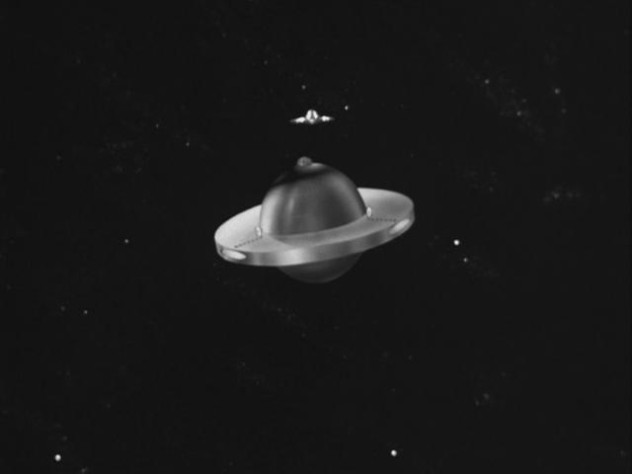
British official interest in UFOs dates back to the investigations into mysterious “foo fighters” seen during World War I and World War II. In August 1950, Britain’s Ministry of Defence set up the Flying Saucer Working Party (FWSP) to look into the possibility that UFOs were of extraterrestrial origin by investigating reports and liaising with the CIA. The FSWP had five members, all experts from Technical Intelligence branches of the Air Ministry, Admiralty, War Office, and Ministry of Defence. They spent eight months in a hotel room next to Trafalgar Square, sifting through UFO reports from the RAAF and Royal Navy. The conclusions of the FSWP were that the vast majority of the sightings were spurious, and the few unexplained were likely optical illusions. The final report of the group in June 1951 recommended that the government debunk sightings and suppress public knowledge of sightings that could not be explained.
The Ministry of Defence logged over 11,000 UFO reports between 1959 and 2007, although few records dating before 1962 exist due to a policy of destroying reports after five years if they weren’t a possible security threat. In 1967, reports of UFOs over southern England led to British military and police mobilization until it was revealed as a prank by engineering students from Farnborough Technical College. There remained a few believers; the Earl of Clancarty persuaded the House of Lords to debate the issue of UFOs in 1979, which resulted in many lords speaking out against government censorship, the Bishop of Norwich stating that Jesus Christ died for the sins of intelligent beings throughout the universe, and the formation of a House of Lords All Party UFO Study Group. Aristocratic enthusiasm aside, the Ministry of Defence eventually closed their UFO report hotline in 2009 in the economic recession due to the waste of resources when there had been no indications of a security threat in 50 years of investigation.
5 Project Magnet And Project Second Storey
Canada
In 1950, Canadian Department of Transport radio engineer Wilbert B. Smith requested the use of state laboratories and field equipment in order to study UFOs and determine the physical means by which they flew. Smith believed that it was possible to use the Earth’s magnetic field as a means of aerial propulsion and that UFOs likely used geomagnetic propulsion. The quest to understand the science of UFO flight (and develop new technologies based on it) led to the creation of Project Magnet. Smith said of flying saucers:
“They are a hundred feet or more in diameter; they can travel at speeds of several thousand miles per hour; they can reach altitudes well above those which should support conventional air craft or balloons; and ample power and force seem to be available for all required maneuvers . . . Taking these factors into account, it is difficult to reconcile this performance with the capabilities of our technology, and unless the technology of some terrestrial nation is much more advanced than is generally known, we are forced to the conclusion that the vehicles are probably extra-terrestrial, in spite of our prejudices to the contrary.”
Project Magnet’s goal was to acquire a comprehensive understanding of the principles powering UFOs in order to replicate the technology. Smith set up an observatory in Shirley’s Bay, Ontario in order to measure magnetic and radio noise disturbances from passing UFOs and work out their physical properties. Project Magnet began as a classified project that dealt mainly with geomagnetic research, but its focus soon shifted to UFO research in the hope that it would lead to a cheap breakthrough in geomagnetic propulsion. Smith’s book about his idiosyncratic theories, The New Science, was published after his death.
Running alongside the Department of Transport program was a Defence Research Board program known as Second Storey. The government departments involved believed that there were simply too many UFO reports and too many similarities for them to be discounted. They were also suspicious of American analysis of UFO reports due to the lack of precise and realistic details. They developed a detailed questionnaire designed to get the most objective reports on UFO sightings from witnesses. The Second Storey committee was disbanded in 1954 because of Canadian government embarrassment over the UFO publicity and the conclusion that the UFO phenomenon could not be satisfactorily explained with scientific methods.
4 CEFAA
Chile
The Comite de Estudios de Fenomenos Aereos Anomalos, or the Committee for the Studies of Anomalous Aerial Phenomena, is an official UFO study group operating under the Ministerial Department of Civil Aeronautics (DGAC) and the jurisdiction of the Chilean air force. The Committee was formed in 1997 after DGCA officials at Chacalluta Airport observed aerial anomalies over two nights, leading to a flurry of media interest and confessions by government officials of sighting OVNIs, the Spanish abbreviation for UFOs. The committee’s mission is to collect information and investigate reports on unidentified aerial phenomena in order to determine any danger to Chilean aviation.
CEFAA is regulated by the 2008 Transparency Law, which impels government agencies to act in an open manner. While most other countries that investigate UFOs only publicly release paper files, CEFAA also releases hard physical evidence, including photos, videos, and audio recordings of UFO encounters. In 2014, CEFAA released unexplained photos of a disc-shaped object hovering over the Collahuasi copper mine, which is located in a desolate Andean region 4,300 meters (14,000 ft) above sea level. The photos were taken by one of four technicians specializing in electricity, electronics, and fluid control who were working near the site in April 2013. The CEFAA ruled out the possibility of the UFO being a weather phenomenon, balloon, aircraft, bird, or drone, and concluded that the object was unidentifiable. A 2014 meeting at Civil Aviation Department headquarters of representatives from CEFAA, the DGAC, and the Chilean Air Force with a number of top scientists concluded that UFOs pose no threat to aircraft. The DGAC Chief of Operations simply said:
“If, as many witnesses have declared, the [UFO phenomena] demonstrates ‘intelligent behavior,’ and if we admit this fact, then we must look for ‘the intention behind’ that intelligence, whatever it may be—a form of energy, perhaps—it doesn’t matter. Intelligence is what matters. If this is so, we must ask: has it shown hostility or carried out openly threatening maneuvers? Has it actually attacked our aircraft? To date, this doesn’t seem to be the case. We cannot possibly call something a threat to something or someone if they have not shown any open intention to do harm. And even less, we do not even know their exact nature!”
3 Operacao Prato
Brazil
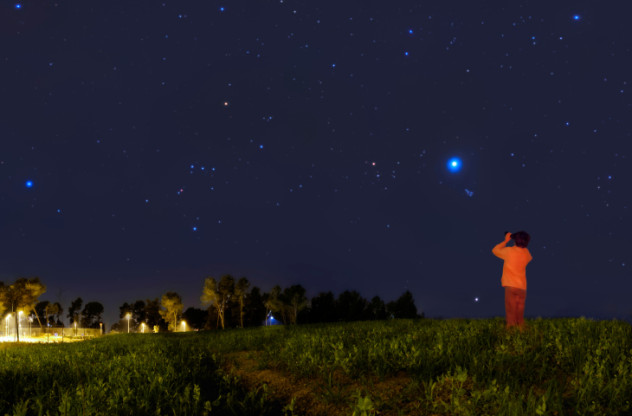
One of the largest official UFO investigations to date was carried out in northeast Brazil: Operacao Prato, or Operation Plate. The first reports came from Amazon villages near the Atlantic coast, where even the mayor of Colares complained of UFOs disturbing the fishing. In November 1977, a group of military troops under the command of Captain Uyrange Hollanda encountered a UFO that appeared directly above them. The disc-shaped object sounded “like an air conditioner [and] like a bicycle sprocket when you pedal backwards” and emitted a yellow glow five times before turning blue and shooting off toward the sea.
After reporting to his base commander in Belem, Hollanda was placed in charge of a classified investigation with a team of specialists and photographers. The investigators interviewed over 300 people, including fishermen who reported seeing UFOs going in and out of the river and mysterious blue lights under the water. Several hundred photos of UFOs were taken using filters as well as infrared and ultraviolet film, and the objects came in a dazzling variety of shapes: discs, pyramids, cylinders, and a 100-meter-long (330 ft) “mother ship” shaped like an oil barrel. The locals referred to the objects as chupa-chupas, a reference to blood-sucking, as there were multiple reports of the UFOs paralyzing people with a flash of green light and burning them with a flash of red light that left welts on the skin. Hollanda came to believe the objects were merely taking blood samples, but at least two people were reported to have died.
After the reports of the investigation were sent to Brasilia, Operacao Prato was classified and those involved were ordered not to speak of it. In 1997, Colonel Hollanda gave an interview to a UFO magazine describing the operation. Less than two months later, he was found hanged inside his home. Though some suspect foul play, most evidence indicated suicide. Many documents related to Operation Plate and other UFO encounters investigated by the Brazilian military were released in 2009. In 2013, representatives from the Brazilian Air Force, Navy, and Army met with civilian UFO researchers to discuss a combined effort to study flying saucers.
2 Setka MO And Setka AS
Soviet Union
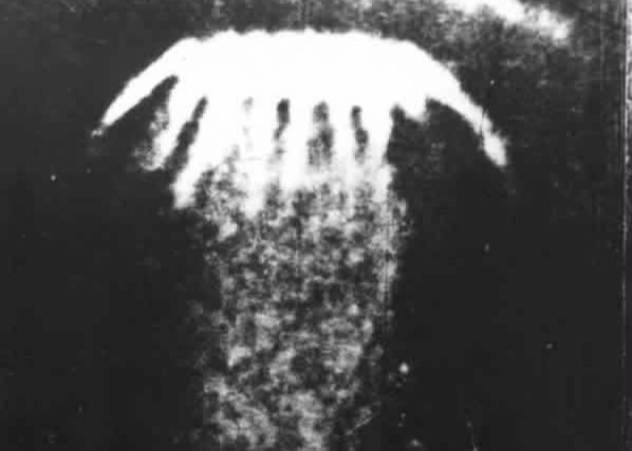
On the night of September 20, 1977, the inhabitants of Petrozavodsk witnessed a massive pulsating object like a red star or jellyfish appear over their village for around 10 minutes. While a nearby hydrometeorologic observatory reported no anomalies, the witnesses were numerous, and similar instances were reported as far away as Finland. Letters flooded into the Presidium of the Academy of Science from local officials and the public, and nearby countries inquired whether it was some form of weapons testing.
The Academy of Sciences asked the Military-Industrial Commission (MIC) and the Scientific and Technical Council (STC) to help coordinate an investigation with the assistance of the Ministry of Defense. The MIC updated the five-year plan for defense to include two new topics: the Ministry of Defense’s Setka MO, “Research of paranormal atmospheric and space phenomena and their influence on the operation of military technical equipment and personnel” and the Academy of Science’s Setka AS, “Research of a physical nature and mechanisms of paranormal atmospheric and space phenomena.”
The official Soviet state UFO research program ran from 1978 to 1990, though they referred to any encounters as “paranormal phenomena.” The project was kept secret, encouraged to assume that any UFO activity was the result of military testing, and in the case of verifying actual paranormal UFO activity instructed to apply any knowledge gathered to military use. Most of the reports were concluded to be optical illusions caused by high-altitude weather balloons or sunlight filtering through clouds of dust and gas left by rocket launches.
Running parallel to the Setka program were investigations by the KGB division overseeing the air force and aircraft manufacturing, which collected UFO reports. Various programs were launched in reaction to the UFOs, including training missile crews who sighted a UFO to avoid acting in a way that could produce an aggressive response. According to retired FSB major general and Academy of Sciences researcher Vasily Yeremenko, an experiment to attract UFOs began in the early 1980s after it was noted that the phenomena appeared during periods of “heightened tension” such as weapons tests and the movement of military equipment. By moving large numbers of combat aircraft or equipment, balls of light would appear in the sky. The military and state scientists in the case eventually came to the conclusion that the UFOs were either unknown natural phenomena, American or Japanese recon equipment, or extraterrestrial objects.
1 Project Sign, Project Grudge & Project Blue Book
United States

On June 24, 1947, Kenneth Arnold sighted a formation of colorful, crescent-shaped crafts flying at speeds of over 1,200 knots near Mount Rainier, Washington. Describing their movement as resembling “a saucer when you skip it over the water,” he coined the term “flying saucer.” Public interest in the phenomena led to increasing calls on the Air Force to investigate the issue. The first program, Project Sign, was carried out by the Air Technical Intelligence Center at the Wright-Patterson Air Force Base beginning in late 1947. It produced an “Estimate of the Situation” that was officially inconclusive regarding the cause, but it dismissed the rumors that it was linked to American experimental aircraft testing or the so-called “Horten discs” said to be developed by captured German scientists for the Soviets. The report concluded that UFO craft were real, and likely extraterrestrial in origin. The estimate was forwarded to the Pentagon, where it led to a spat between Air Force officers who supported the findings and those who feared the Estimate could erode public confidence in the military. USAF Chief of Staff General Hoyt Vandenberg ordered the documents to be destroyed and Sign dismantled.
In 1949, Sign was succeeded by Project Grudge, and the Sign investigators were transferred into unrelated projects. Fearing a public panic in the wake of the Roswell incident, USAF sought to debunk the UFO phenomenon as much as possible. Grudge explained that the UFO activity was the result of conventional aircrafts, weather balloons, meteors, optical illusions, and other mundane causes. The investigators were supported by civilian academics as well as the USAF Air Weather Service and United States Weather Bureau. Grudge concluded that UFOs were cases of mistaken identity, mass hysteria, hoaxes, and psychopaths, and recommended that the findings be forwarded to the psychological warfare division.
Pressure from high-ranking Air Force officials, based on increasing strange radar readings, led to Grudge’s revitalization in 1952 under Captain Edward J. Ruppelt. The Project was renamed “Blue Book” after the blue testing booklets given out at some universities. In 1953, the Air Force and CIA convened the Robertson Panel, a group of scientists tasked with reviewing the UFO situation. The Panel recommended downgrading Project Blue Book due to the potential waste of military resources. Nevertheless, the Project continued its work until 1969, by which time the Air Force had logged 12,618 sightings. The closure was based on a University of Colorado report that concluded there was no evidence of advanced technology, extraterrestrial origin, or a national security threat. Jeff Underwood, a National Museum of the United States Air Force historian, also links the closure with a shift in popular culture: “As soon as Star Trek started, I lost interest in UFOs.”
In early 2015, amateur historian John Greenewald posted over 100,000 pages of declassified Blue Book files online. The evidence revealed that while most of the sightings were easily explainable, there were around 700 cases that left investigators at a loss, including a 1964 encounter by a New Mexico police officer of a flying craft marked with a red insignia and piloted by “child-like beings” that left scorch marks and physical evidence behind. Other United States government agencies like the CIA, the DIA, and the NSA also conducted independent investigations into UFOs, but these files either remain classified or have been released so thoroughly redacted as to be unreadable.
David Tormsen believes that weather balloons are an imminent threat to us all.
